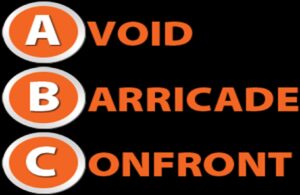ACTIVE SHOOTER EMERGENCY RESPONSE TRAINING (ASERT)
Our Training Goal
Global Security Group's Active Shooter Response Training program is designed to teach individuals and organizations how to respond to an active shooter situation. The program is led by experts with many years of experience in law enforcement and a proven training curriculum. The expert trainers provide participants with practical safety protocols and strategies that are tailored to their specific needs. By taking a personalized approach, Global Security Group empowers participants to make informed decisions and take quick action in an active shooter situation, increasing their chances of survival and reducing potential harm.
Why Choose GSG?
GSG's Active Shooter Response Training instructors are some of the best in the industry. They have a long history of success, having served as instructors at the FBI National Academy and senior members of the NYPD. In 2016, GSG's senior instructors, David Katz and Mark Novak, were invited to help create the current active shooter response curriculum for the FDNY's Fire and Life Safety Director certification course. With their extensive knowledge and dedication to safety, these experts provide participants with the highest quality training, ensuring they have the skills and knowledge needed to protect themselves and others in an emergency.
Course Topics Include,
- Definition of an Active Shooter
- Intervention Strategies / Preventative Measures
- The Importance of Individual Initiative
- Notification / Alert Procedures
- Overcoming the Effects of Extreme Stress / Fear
- Calling 911 & What Information to Provide
The ABCs of Active Shooter Response

AVOID
- Escape Strategies
- Avoiding the Assailant
- Visualization Techniques
- Identifying the Sound, Direction & Location of Gunfire
- How to Exit the Scene Safely
BARRICADE
- Identifying Suitable Barricade Locations
- Proper Barricade Techniques
- Securing a Location Quickly and Effectively
- Identifying the Safe Areas within the Barricaded Room
- Cover Vs. Concealment
- Understanding Basic Ballistics
- Ballistic Protection Afforded by Office Furniture / Equipment
CONFRONT
- Tactics Needed to Survive a Violent Encounter
- Psychology of the Shooter
- Use of Improvised Weapons
- Disabling an Attacker’s Weapon
- Ambushing the Attacker

First Aid for Gunshot Victims (“Stop the Bleed”)
Providing immediate medical assistance can save lives in the event of an active shooter situation, especially when first responders may not be available. The Department of Homeland Security (DHS) encourages bystanders to act in the event of a medical emergency, and this training can provide participants with the knowledge and confidence to do just that.
Clients may opt to include the following material on civilian first aid for gunshot victims in the Active Shooter Response Training presentation.
- Safety Assessment / Scene Safety
- Blood Borne Pathogens / Body Substance Isolation (BSI)
- Initial Assessment
- A-B-C (Airway, Breathing, Circulation)
- Wound Assessment
- Bleeding Control A-B-C (Alert, Bleeding, Compression)
- Quick Clot Packing
- Application of Direct Pressure
- Use of Tourniquets
- Use of Chest Seals
- Equipment Selection & Deployment
- Improvised Equipment
Please contact us at (212) 285-2400 or info@globalsecuritygroup.com for more information.

